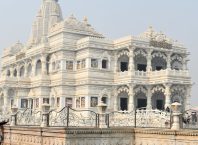Table of Contents
India is a country known for its diverse culture, rich heritage, and ancient history. The country is home to some of the most magnificent monuments in India that are a testament to the grandeur of its past. From the magnificent Taj Mahal to the historic Ajanta and Ellora Caves, India has something for every traveler.
Taj Mahal, Agra: A Marvel of Love and Architecture
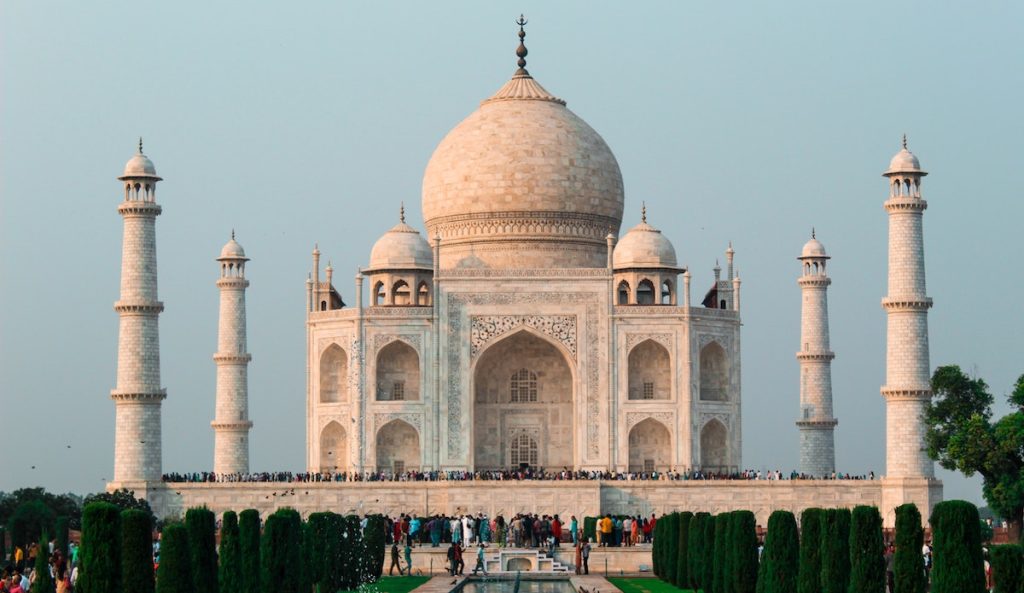
Taj Mahal, one of the Seven Wonders of the World, is a symbol of love and romance. This ivory-white marble mausoleum, situated in the city of Agra in Uttar Pradesh, India, attracts millions of tourists every year. Commissioned by Mughal Emperor Shah Jahan, the monument is a tribute to his beloved wife Mumtaz Mahal. The Taj Mahal is considered as one of the most beautiful buildings in the world, and it’s a must-visit for anyone traveling to India.
History and Architecture
The construction of Taj Mahal began in 1632 and was completed in 1653. The monument was built by the order of Mughal Emperor Shah Jahan in memory of his wife Mumtaz Mahal, who died while giving birth to their 14th child. The mausoleum was designed by Ustad Ahmad Lahauri, who combined Persian, Islamic, and Indian architectural styles to create a unique masterpiece.
The monument is made of white marble that was brought from Rajasthan, and it’s adorned with precious stones and intricate carvings. The central dome of the Taj Mahal is 73 meters high and is surrounded by four smaller domes. The four minarets that stand at each corner of the monument are 40 meters tall and tilted outward slightly to prevent them from falling on the main structure in case of an earthquake.
The Love Story Behind the Monument
The Taj Mahal is not just a monument; it’s also a symbol of love. The story behind the monument is quite romantic. Mumtaz Mahal was Shah Jahan’s favorite wife, and he was devastated by her death. After her death, he decided to build a monument that would honor her memory. The construction of the Taj Mahal was a labor of love that lasted for over 22 years.
It’s said that Shah Jahan used to visit the construction site every day and would personally oversee the work. He was so heartbroken by his wife’s death that he never married again and was buried next to her in the Taj Mahal after his death.
Best Time to Visit
The best time to visit the Taj Mahal is from October to March when the weather is pleasant. Summers can be scorching hot, and winters can be extremely cold. The monument is open from sunrise to sunset, and it’s advised to visit the Taj Mahal early in the morning to avoid crowds.
How to Reach
Agra is well-connected by air, train, and road. The nearest airport is the Indira Gandhi International Airport in Delhi, which is around 200 km away from Agra. Agra also has its own airport, but it’s only connected to a few cities in India. Agra railway station is well-connected to major cities in India. If you’re traveling by road, Agra is connected to major cities by national highways.
Entry Fee
The entry fee for the Taj Mahal is INR 50 for Indian citizens and INR 1300 for foreign tourists. Children below the age of 15 can enter for free. There is also a separate fee for entering the main mausoleum and the Taj Museum.
Qutub Minar, Delhi: A Towering Wonder of History and Architecture
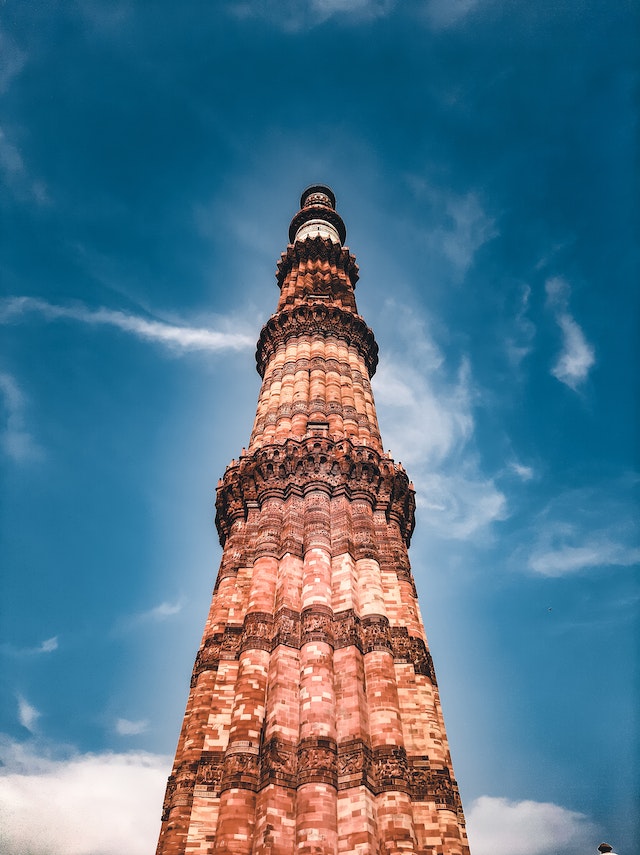
History and Architecture
Qutub Minar was built by Qutb-ud-din Aibak in 1192 AD. He was the founder of the Delhi Sultanate, and the minaret was built to signify the victory of the Islamic empire over the Hindu Rajputs. The minaret is made of red sandstone and marble, and it’s adorned with intricate carvings and inscriptions.
The monument has five storeys, and each storey has a unique design. The first three storeys of the minaret are made of red sandstone, and the top two storeys are made of marble. The minaret is also decorated with balconies, turrets, and chhajjas.
Qutub Minar is a historical monument located in the heart of Delhi, India. It’s a towering minaret that stands at a height of 73 meters, making it one of the tallest minarets in the world. The monument is a testament to the rich history and architecture of India and attracts millions of tourists every year. The Qutub Minar complex also includes several other monuments in India, including the Quwwat-ul-Islam Mosque, Alai Darwaza, and the Iron Pillar.
Interesting Facts About the Minaret
- Qutub Minar is not only a minaret but also a UNESCO World Heritage site.
- The minaret was damaged several times due to earthquakes, and the top storey was rebuilt by Firoz Shah Tughlaq in 1368 AD.
- The Iron Pillar located in the Qutub Minar complex is made of pure iron and has not rusted in over 1600 years.
- The minaret has a spiral staircase with 379 steps that leads to the top.
Best Time to Visit
The best time to visit Qutub Minar is from October to March when the weather is pleasant. Summers in Delhi can be extremely hot, and winters can be chilly. The monument is open from sunrise to sunset, and it’s recommended to visit the monument early in the morning to avoid crowds.
How to Reach
Delhi is well-connected by air, train, and road. The nearest airport is the Indira Gandhi International Airport, which is around 12 km away from Qutub Minar. The monument is located in South Delhi, and it’s easily accessible by metro, bus, and taxi.
Entry Fee
The entry fee for Qutub Minar is INR 30 for Indian citizens and INR 500 for foreign tourists. Children below the age of 15 can enter for free. There is also a separate fee for entering the Quwwat-ul-Islam Mosque.
Khajuraho Group of Monuments, Madhya Pradesh
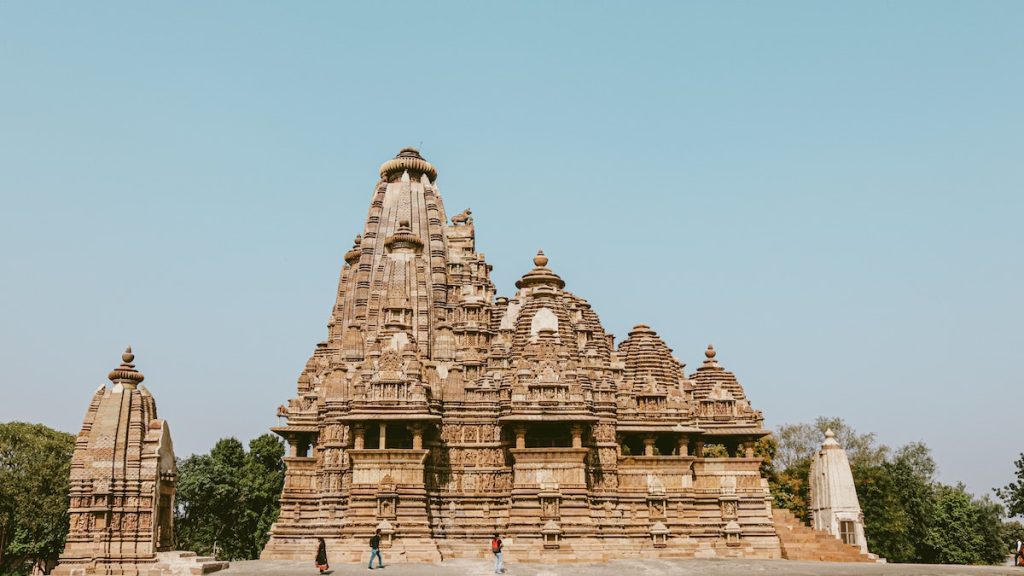
The Khajuraho Group of monuments in India is a cluster of Hindu and Jain temples located in the Chhatarpur district of Madhya Pradesh. Built between 950 and 1050 CE, the temples are renowned for their stunning architecture and intricate stone carvings.
History and Architecture
The Khajuraho temples were built during the reign of the Chandela dynasty, who ruled over central India from the 10th to 12th centuries. The temples were constructed using sandstone and granite, and feature a blend of Nagara and Dravidian architectural styles.
The temples are adorned with intricate carvings depicting various Hindu and Jain deities, as well as mythological creatures and scenes from daily life. However, it is the erotic sculptures that have made Khajuraho famous worldwide. The erotic sculptures are believed to represent the Kama Sutra, and are a testament to the ancient Indian philosophy of enjoying life in all its forms.
Famous Erotic Sculptures
Of the original 85 temples, only 25 remain today. The temples are divided into three groups – western, eastern, and southern – and are spread over an area of 20 square kilometers. The western group of temples is the most well-preserved and features some of the most famous erotic sculptures.
The erotic sculptures at Khajuraho are not merely meant to titillate, but are also symbolic representations of the merging of the male and female energies to create a state of spiritual bliss. They are a testament to the ancient Indian belief that sexuality is a natural and integral part of life.
Best Time to Visit
The best time to visit Khajuraho is between October and March, when the weather is pleasant and cool.
How to Reach
The nearest airport to Khajuraho is located in Khajuraho itself, and is well-connected to major cities in India. The nearest railway station is in Harpalpur, which is about 90 km away from Khajuraho. One can also take a bus or hire a taxi to reach Khajuraho.
Entry Fee
The entry fee for Indian tourists is Rs. 40 per person, while foreign tourists have to pay Rs. 600 per person. Children below the age of 15 are allowed to enter for free.
Ajanta Caves, Maharashtra

The Ajanta Caves are a group of 30 rock-cut Buddhist cave monuments located in the Aurangabad district of Maharashtra. Built between the 2nd century BCE and the 6th century CE, the caves are renowned for their ancient Indian art and architecture.
History and Architecture
The Ajanta Caves were built in two phases, with the earlier caves dating back to the 2nd century BCE. The caves were built during the Satavahana dynasty and the Vakataka dynasty, and served as retreats for Buddhist monks. The caves were abandoned in the 7th century CE, and were rediscovered by British officers in the 19th century.
The caves are carved into a horseshoe-shaped cliff, and are divided into two groups – the Hinayana caves and the Mahayana caves. The Hinayana caves are simpler in design and feature chaitya halls and rock-cut stupas, while the Mahayana caves are more elaborate and feature large, detailed sculptures and intricate paintings.
Cave Paintings
The Ajanta Caves are famous for their stunning cave paintings, which depict scenes from the life of Buddha, as well as various other mythological and historical events. The paintings are executed in a style known as the Indian rock-cut style, and are characterized by their use of vivid colors and attention to detail.
The paintings are a testament to the skill and artistry of ancient Indian painters, and are considered to be some of the greatest surviving examples of ancient Indian art.
Best Time to Visit
The best time to visit the Ajanta Caves is between November and March, when the weather is cool and pleasant.
How to Reach
The nearest airport to the Ajanta Caves is the Aurangabad Airport, which is located about 100 km away. The nearest railway station is located in Jalgaon, which is about 60 km away. From there, one can take a bus or hire a taxi to reach the caves.
Entry Fee
The entry fee for Indian tourists is Rs. 30 per person, while foreign tourists have to pay Rs. 500 per person. Children below the age of 15 are allowed to enter for free.
Read more: Top 31 Famous Temples in India
Ellora Caves, Maharashtra

The Ellora Caves are a group of 34 rock-cut temples located in the Aurangabad district of Maharashtra. Built between the 6th and 10th centuries CE, the caves are renowned for their exquisite architecture and beautiful sculptures.
History and Architecture
The Ellora Caves were built during the period of the Rashtrakuta dynasty, and are considered to be one of the finest examples of Indian rock-cut architecture. The caves are carved into the sides of a basaltic cliff, and are divided into three groups – the Buddhist caves, the Hindu caves, and the Jain caves.
The most famous temple at Ellora is the Kailash Temple, which is dedicated to Lord Shiva. The temple is a masterpiece of Indian architecture and is considered to be one of the most remarkable cave temples in the world.
The temple is carved out of a single piece of rock, and features intricate carvings and sculptures that are considered to be some of the finest examples of Indian art. The temple is surrounded by a moat and is accessed via a grand gateway.
Best Time to Visit
The best time to visit the Ellora Caves is between November and March, when the weather is cool and pleasant.
How to Reach
The nearest airport to the Ellora Caves is the Aurangabad Airport, which is located about 30 km away. The nearest railway station is located in Aurangabad, which is about 30 km away. From there, one can take a bus or hire a taxi to reach the caves.
Entry Fee
The entry fee for Indian tourists is Rs. 40 per person, while foreign tourists have to pay Rs. 600 per person. Children below the age of 15 are allowed to enter for free.
Konark Sun Temple, Odisha
The Konark Sun Temple is a 13th century temple located in the small town of Konark in the Puri district of Odisha. The temple is dedicated to the Hindu sun god Surya, and is one of the most famous and well-known temples in India.
History and Architecture
The Konark Sun Temple was built during the reign of King Narasimhadeva I of the Eastern Ganga dynasty in the 13th century. The temple is a masterpiece of Kalinga architecture and is designed in the shape of a giant chariot with 24 wheels, pulled by seven horses, representing the seven days of the week.
The temple is renowned for its intricate carvings and sculptures, which are considered to be some of the finest examples of Indian art. The temple was built using black granite and features a number of towering structures, including the Natya Mandap, Jagmohan, and the Vimana.
The Famous Sun Chariot
The most famous feature of the Konark Sun Temple is the Sun Chariot, which is a stone chariot that is pulled by seven horses. The chariot is located in front of the temple and is considered to be one of the most iconic symbols of Indian architecture.
Best Time to Visit
The best time to visit the Konark Sun Temple is between October and February, when the weather is cool and pleasant.
How to Reach
The nearest airport to Konark is the Biju Patnaik International Airport in Bhubaneswar, which is about 64 km away. The nearest railway station is located in Puri, which is about 35 km away. From there, one can take a bus or hire a taxi to reach the temple.
Humayun’s Tomb, Delhi
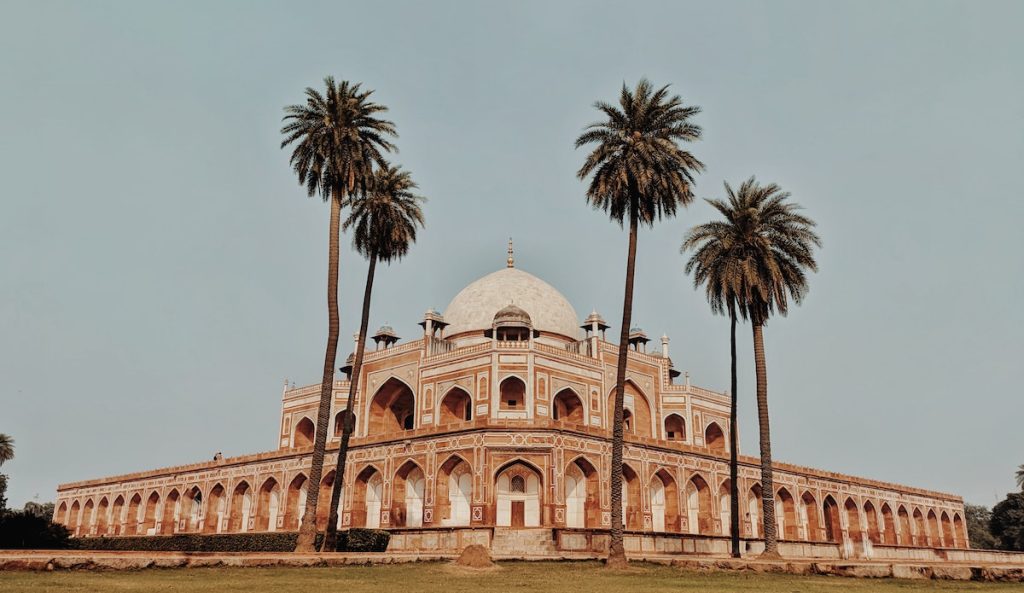
Humayun’s Tomb is a grand mausoleum located in Nizamuddin East, Delhi. It was commissioned by the Mughal emperor Humayun’s wife, Empress Bega Begum, in the 16th century. The tomb is one of the most significant Mughal architectural structures in India.
History and Architecture
Humayun’s Tomb was built in 1569-70 AD by Persian architects Mirak Mirza Ghiyas and his son Sayyid Muhammad. The architecture of the tomb is a combination of Indian and Persian styles, and is considered to be a precursor to the grand Taj Mahal. The tomb is built using red sandstone and white marble and features intricate carvings and calligraphy.
UNESCO World Heritage Site
Humayun’s Tomb was declared a UNESCO World Heritage Site in 1993. It is recognized as one of the finest examples of Mughal architecture in India, and its grandeur and beauty attracts tourists from all over the world.
Best Time to Visit
The best time to visit Humayun’s Tomb is between October and March when the weather is cool and pleasant. The tomb is open from sunrise to sunset, and the early morning hours are the best time to visit to avoid crowds.
How to Reach
The nearest metro station to Humayun’s Tomb is the JLN Stadium Metro Station on the Violet Line. One can also take a bus or hire a taxi to reach the tomb.
Entry Fee
The entry fee for Indian tourists is Rs. 40 per person, while foreign tourists have to pay Rs. 600 per person. Children below the age of 15 are allowed to enter for free. There is an additional fee for photography and videography.
Red Fort, Delhi: A Historic Monument of India
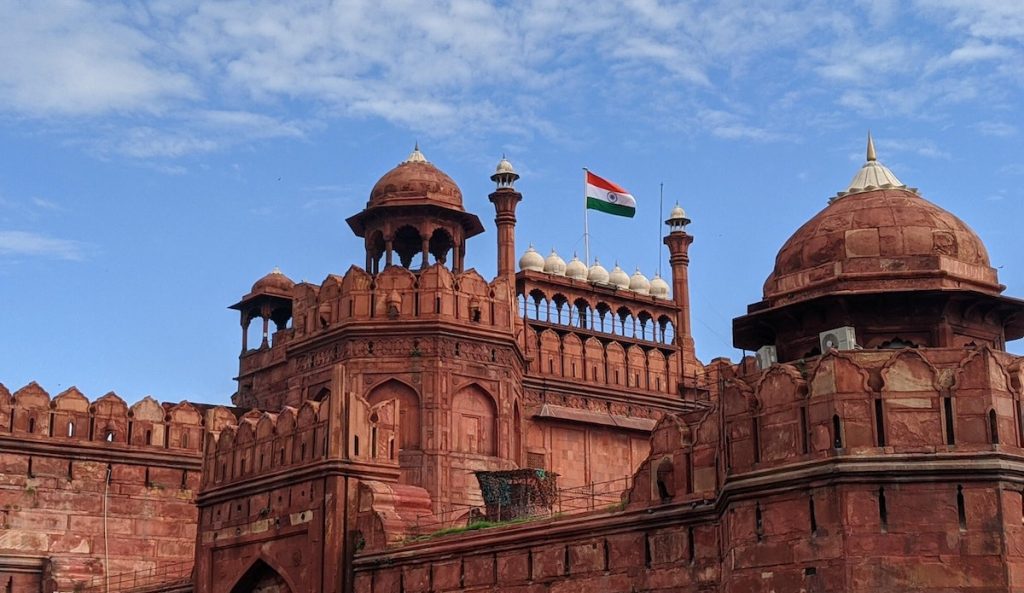
The Red Fort in Delhi, also known as Lal Qila, is one of the most famous monuments in India. It was built by the Mughal emperor Shah Jahan in the mid-17th century and served as the palace for the Mughal emperors until the British took over in 1857. The fort is made of red sandstone, hence the name, and is a marvel of Mughal architecture.
History and Architecture
The Red Fort was built in 1638 by the Mughal emperor Shah Jahan, who also built the Taj Mahal. It was the residence of the Mughal emperors for nearly 200 years until the British took over in 1857. The fort is a symbol of the power and grandeur of the Mughal Empire, which ruled over much of India from the 16th to the 19th century.
The fort is surrounded by a moat and massive walls that are more than 33 meters high. The main entrance to the fort is through the Lahore Gate, which is also known as the Red Fort Gate. The gate is made of red sandstone and has a large archway that is decorated with calligraphy and floral designs.
Inside the fort, there are many beautiful buildings and monuments, including the Diwan-i-Am (Hall of Public Audience), Diwan-i-Khas (Hall of Private Audience), Moti Masjid (Pearl Mosque), and the Hayat Baksh Bagh (Life-Bestowing Garden).
Famous Monuments in India Inside the Fort
One of the most famous monuments inside the Red Fort is the Mumtaz Mahal, which was built by Shah Jahan in memory of his wife Mumtaz Mahal. The monument is made of white marble and has intricate carvings and inlay work.
Another famous monument is the Rang Mahal, which was the palace of the emperor’s wives and concubines. It has beautiful murals and was decorated with precious stones and mirrors.
The fort also has a museum that displays artifacts from the Mughal period, including weapons, jewelry, and costumes.
Best Time to Visit
The best time to visit the Red Fort is from October to March, when the weather is pleasant and cool. The fort is open every day except Monday from 9:30 am to 4:30 pm.
How to Reach
The Red Fort is located in the heart of Old Delhi and is well-connected by road and metro. The nearest metro station is Chandni Chowk, which is on the yellow line. Buses and taxis are also available from all parts of the city.
Entry Fee
The entry fee for Indian nationals is Rs. 35, and for foreign nationals, it is Rs. 500. There is no entry fee for children below the age of 15 years.
Hawa Mahal, Jaipur
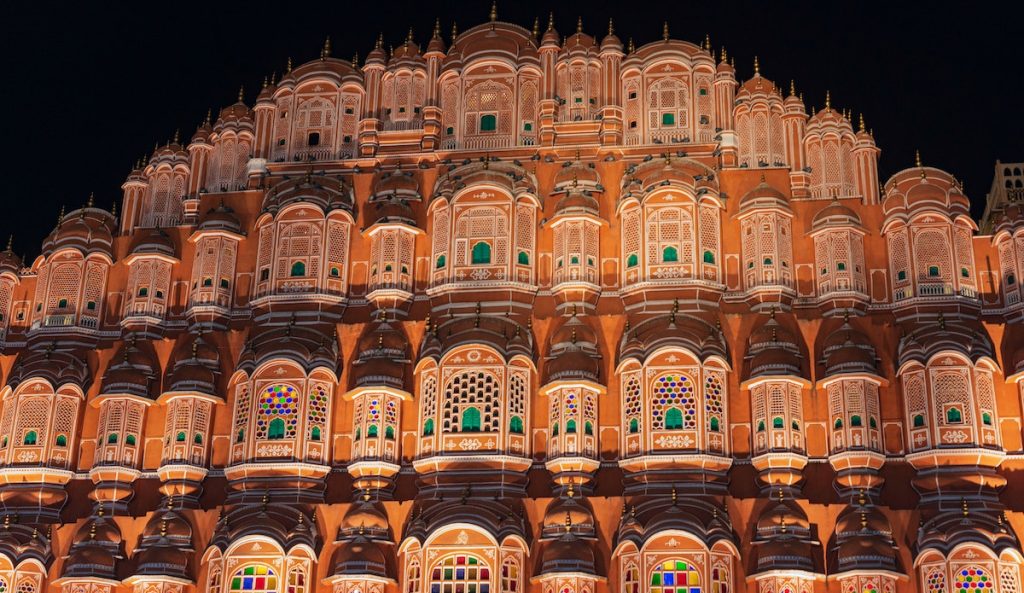
Hawa Mahal, also known as the Palace of Winds, is one of the most iconic landmarks of Jaipur, the capital city of Rajasthan. The palace, built in 1799 by Maharaja Sawai Pratap Singh, is known for its unique architecture and intricate design.
History and Architecture
The Hawa Mahal was built as an extension to the City Palace, allowing the royal ladies to watch the daily life and processions of the city without being seen by the public. The five-story palace is constructed of red and pink sandstone and features 953 small jharokhas or windows with intricate latticework, allowing the cool breeze to pass through the palace, hence the name “Palace of Winds.” The palace also features a small museum showcasing the history and culture of Jaipur.
Best Time to Visit
The best time to visit Hawa Mahal is during the winter months from November to February when the weather is pleasant and cool. The palace can be visited during the day between 9:00 am to 4:30 pm.
How to Reach
Hawa Mahal is located in the heart of the city and is easily accessible by various modes of transport. The Jaipur International Airport is around 13 km away, and the Jaipur Junction railway station is around 5 km away. Taxis and auto-rickshaws are easily available to reach the palace.
Entry Fee
The entry fee for Hawa Mahal is INR 50 for Indian nationals and INR 200 for foreign nationals. However, there are additional charges for photography and video recording.
Fatehpur Sikri, Uttar Pradesh
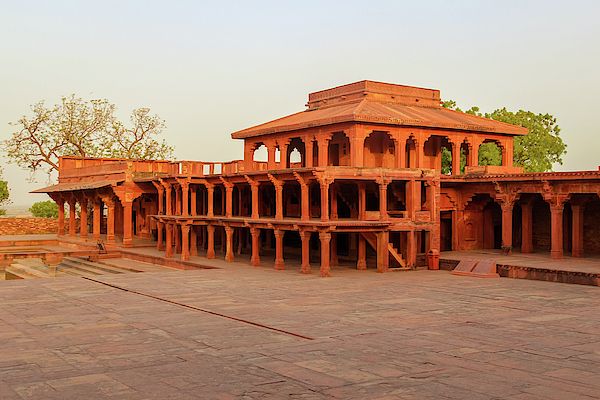
Fatehpur Sikri is a small city located near Agra in the state of Uttar Pradesh, India. It was built during the 16th century by Mughal emperor Akbar and served as his capital for around 14 years. The city is known for its magnificent architecture, blend of Hindu and Islamic styles, and historical significance.
History and Architecture
The city’s architecture reflects a blend of Hindu and Islamic styles. The buildings are adorned with intricate carvings, inlaid stone work, and geometric patterns. The city also houses several important religious buildings, including the Jama Masjid and the Dargah of Sheikh Salim Chishti.
Fatehpur Sikri was built by Akbar to commemorate the birth of his son, Jahangir. The city was designed by a Persian architect named Ustad Ahmad Lahauri and was built using red sandstone. It was considered to be one of the most significant Mughal architectural creations.
Interesting Facts:
- Fatehpur Sikri was declared a UNESCO World Heritage Site in 1986.
- The city was abandoned after only 14 years due to the scarcity of water in the area.
- It is said that Akbar built the city after he was blessed with a son by Sheikh Salim Chishti.
- The Panch Mahal, a five-storey palace in the city, is known for its unique architecture and design.
Best Time to Visit
The best time to visit Fatehpur Sikri is between the months of October and March when the weather is pleasant and cool.
How to Reach
Fatehpur Sikri is well-connected by road and rail to major cities in India. The nearest airport is in Agra, which is around 40 km away from Fatehpur Sikri.
Entry Fee
The entry fee to Fatehpur Sikri is INR 50 for Indian nationals and INR 610 for foreign nationals. There are additional charges for photography and videography.
Mehrangarh Fort, Jodhpur
Mehrangarh Fort is one of the largest forts in India located in the city of Jodhpur in Rajasthan. The fort was built by Rao Jodha in 1459 and has since been expanded and renovated by subsequent rulers. It is situated on top of a hill and offers breathtaking views of the surrounding landscape.
History and Architecture
The fort has a rich history and is an important part of Jodhpur’s heritage. The fort is a stunning example of Rajput architecture and has several palaces and temples within its walls. The fort’s walls are adorned with intricate carvings and the palaces inside are decorated with beautiful paintings, frescoes, and stained glass windows. The fort also houses a museum that displays a vast collection of weapons, armor, and other artifacts from the bygone era.
Best Time to Visit
The best time to visit Mehrangarh Fort is during the winter months of November to February when the weather is cool and pleasant.
How to Reach
Mehrangarh Fort is located in Jodhpur and is well-connected to major cities in India. Jodhpur has its own airport and is also well-connected by road and rail.
Entry Fee
The entry fee for Mehrangarh Fort is INR 100 for Indian nationals and INR 600 for foreign nationals. There is also an additional fee for the museum.
Mehrangarh Fort is a must-visit for anyone traveling to Jodhpur. The fort’s grandeur and beauty are sure to leave you spellbound.
Amer Fort, Jaipur
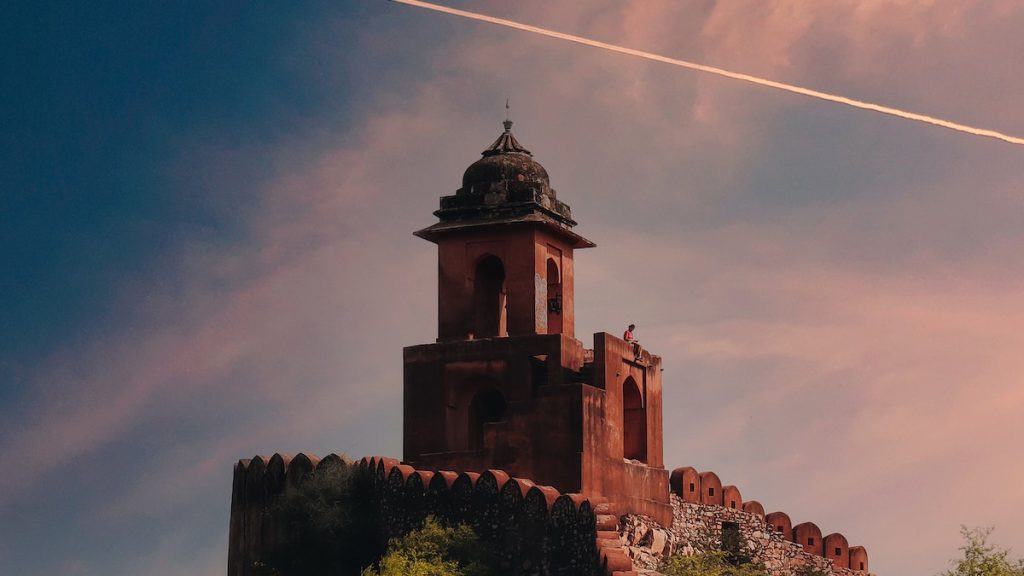
Amer Fort, also known as Amber Fort, is a magnificent fort located in Amer, a town situated 11 kilometers away from Jaipur, the capital city of Rajasthan in India. Built by Raja Man Singh in the 16th century, the fort is a testament to the glorious past of the Rajputana era. It is one of the most popular tourist destinations in Jaipur, attracting millions of visitors every year.
History and Architecture
Amer Fort was built by Raja Man Singh in 1592 AD. However, it was expanded and renovated by his successors over the years. The fort is made of red sandstone and marble, and it features a beautiful blend of Rajput and Mughal architectural styles. It comprises several buildings, including the Diwan-e-Aam (Hall of Public Audience), the Diwan-e-Khas (Hall of Private Audience), the Sheesh Mahal (Palace of Mirrors), and the Sukh Niwas (Hall of Pleasure). The fort also has several courtyards and gardens, including the beautiful Maota Lake.
Interesting Facts
- Amer Fort is located on top of a hill, and visitors can reach it by riding on elephants or by taking a jeep ride.
- The fort is famous for its intricate artwork and carvings, including delicate jali work and beautiful frescoes.
- The Sheesh Mahal, also known as the Palace of Mirrors, is a hall of mirrors that is renowned for its beautiful glasswork. The walls and ceilings of the hall are adorned with thousands of tiny mirrors that reflect light and create a stunning visual effect.
- The fort has also been featured in several Bollywood films, including Jodhaa Akbar and Bajirao Mastani.
Best Time to Visit
The best time to visit Amer Fort is during the winter season, from November to February, when the weather is pleasant and cool. The fort is open from 9:00 am to 5:30 pm every day.
How to Reach
Amer Fort is located in Amer, a town situated 11 kilometers away from Jaipur. Visitors can reach the fort by taking a taxi, auto-rickshaw, or bus from Jaipur.
Entry Fee
The entry fee for Amer Fort is INR 200 for Indian nationals and INR 500 for foreign nationals. An additional fee is charged for visitors who want to take an elephant ride or a jeep ride to the fort.
Sanchi Stupa, Madhya Pradesh
Located in the heart of Madhya Pradesh, the Sanchi Stupa is one of the most significant Buddhist monuments in India. It is a UNESCO World Heritage Site and an important pilgrimage site for Buddhists from all over the world. The stupa is a perfect example of Buddhist architecture and represents the rise and spread of Buddhism in India.
History and Architecture
he Sanchi Stupa was built during the Mauryan period by Emperor Ashoka in the 3rd century BCE. It was later enlarged and decorated with gateways and railings during the Shunga period (2nd century BCE) and the Satavahana period (1st century BCE). The stupa has a hemispherical dome and is surrounded by four gateways or toranas, each of which is intricately carved with scenes from the life of Buddha and Jataka tales. The stupa is made of bricks and is covered with a thick layer of plaster, which has preserved it over the centuries.
Interesting Facts About the Stupa
- The Great Stupa at Sanchi is one of the oldest stone structures in India and is considered to be a masterpiece of Buddhist architecture.
- The stupa has four gateways or toranas, each of which is adorned with carvings depicting various aspects of the Buddha’s life and teachings.
- The carvings on the gateways and the stupa itself are some of the finest examples of Buddhist art in India.
- The stupa has been restored several times over the centuries, most notably by the British archaeologist Sir John Marshall in the early 20th century.
Best Time to Visit
The best time to visit the Sanchi Stupa is between October and March when the weather is pleasant and cool.
How to Reach
The Sanchi Stupa is located about 50 kilometers north-east of Bhopal, the capital city of Madhya Pradesh. Bhopal is well-connected by air, rail, and road to major cities in India. From Bhopal, one can hire a taxi or take a bus to reach Sanchi.
Entry Fee
The entry fee for the Sanchi Stupa is INR 30 for Indians and INR 500 for foreigners. Students and children are allowed free entry. Photography is allowed, but videography is not permitted inside the monument.
Gateway of India, Mumbai
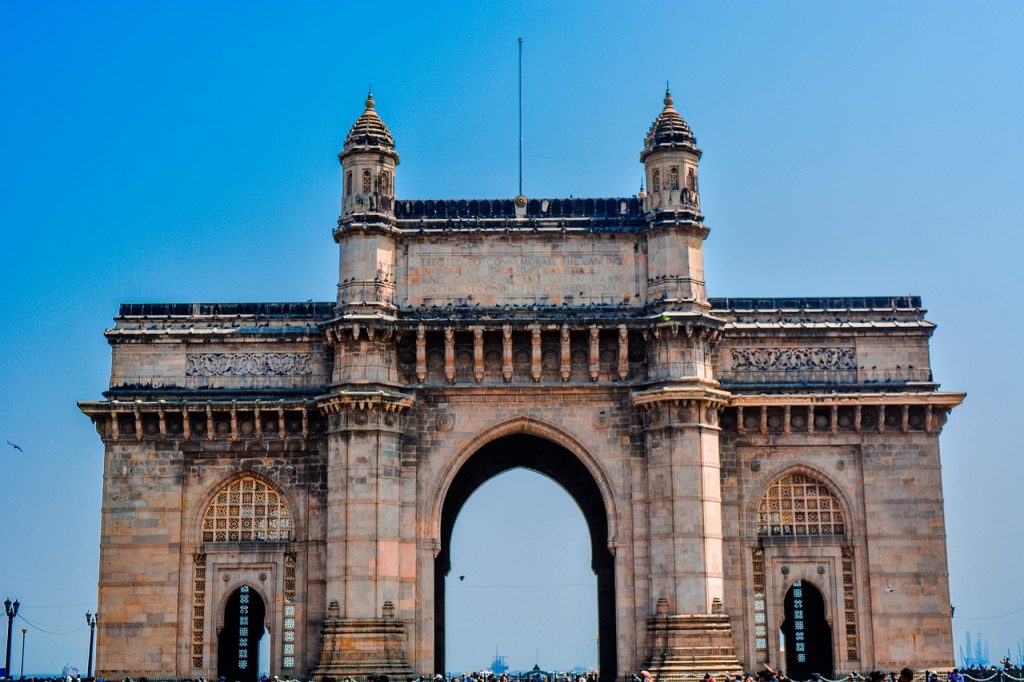
The Gateway of India is an iconic monument located in Mumbai, Maharashtra. Here is some information about this famous landmark:
History and Architecture
The Gateway of India was built to commemorate the visit of King George V and Queen Mary to Mumbai in 1911. The monument was designed by British architect George Wittet in the Indo-Saracenic style, which combines elements of Indian, Islamic, and European architecture. The construction of the monument was completed in 1924.
Interesting Facts:
- The Gateway of India is made of basalt, a type of volcanic rock that is found in the Deccan plateau region of India.
- The monument is 26 meters tall and overlooks the Arabian Sea.
- The Gateway of India was the first thing that many visitors saw when they arrived in Mumbai by boat during the British Raj era.
- The last British troops to leave India passed through the Gateway of India in 1948, marking the end of British colonial rule in the country.
Best Time to Visit
The Gateway of India can be visited at any time of the year. However, it is best to visit during the early morning or late evening when the weather is cooler and the crowds are smaller.
How to Reach
The Gateway of India is located in Colaba, which is a popular tourist destination in Mumbai. It can be reached by taxi, bus, or train. The nearest train station is Chhatrapati Shivaji Terminus, which is about 2.5 kilometers away.
Entry Fee
There is no entry fee to visit the Gateway of India. However, if you want to take a ferry ride to see the Elephanta Caves, you will need to purchase a ticket from the ticket counter located near the monument.
Charminar, Hyderabad
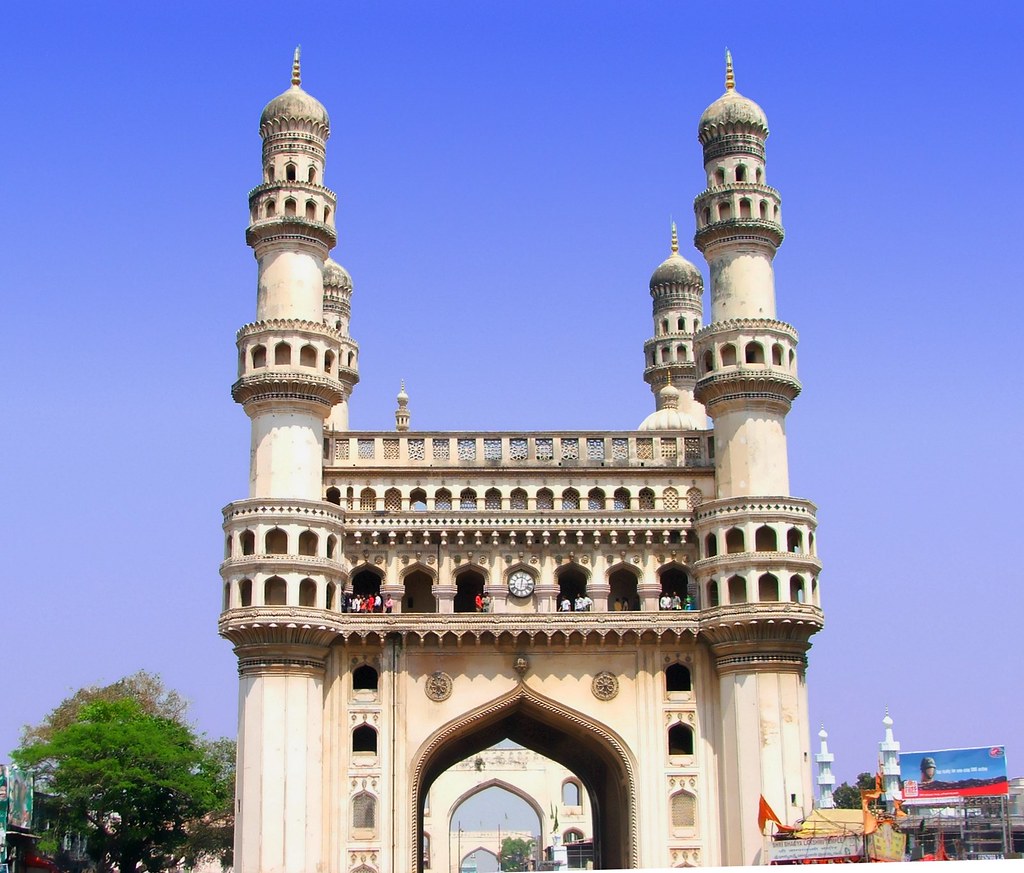
Charminar is a famous monument located in Hyderabad, Telangana. It is one of the most recognizable landmarks of Hyderabad and is a must-visit for anyone traveling to the city. Here is some useful information about Charminar:
History and Architecture
Charminar was built in 1591 by Muhammad Quli Qutb Shah, the fifth ruler of the Qutb Shahi dynasty. The monument was built to commemorate the end of the plague epidemic that had devastated the city. The structure is an impressive example of Indo-Islamic architecture and is made of granite and limestone. It stands at a height of 56 meters and has four minarets, each of which is 20 meters tall. The monument is adorned with intricate designs and is a beautiful sight to behold.
Famous Landmark of Hyderabad
Charminar is a symbol of Hyderabad and is a well-known landmark of the city. It is located in the heart of the old city and is surrounded by a bustling market. The monument is also an important center for the local Muslim community and is used for religious and cultural events.
Best Time to Visit
The best time to visit Charminar is during the winter months of November to February, when the weather is pleasant and cool. The monument is open from 9:30 am to 5:30 pm on all days except Fridays, when it is open from 2 pm to 5:30 pm.
How to Reach
Charminar is located in the heart of the old city and is easily accessible by public transport. The nearest railway station is Hyderabad Deccan Station, which is about 3 km away. The nearest airport is the Rajiv Gandhi International Airport, which is about 20 km away. Taxis and autos are readily available to take you to Charminar from anywhere in the city.
Entry Fee
There is no entry fee to visit Charminar. However, if you want to go inside the monument and climb to the top, you will have to pay a fee of Rs. 25 for Indian citizens and Rs. 300 for foreign nationals.
Brihadeeswarar Temple, Tamil Nadu
Brihadeeswarar Temple, also known as the Big Temple, is a Hindu temple located in Thanjavur, Tamil Nadu. It was built during the Chola dynasty in the 11th century and is one of the largest temples in India. The temple is dedicated to Lord Shiva and is a marvel of architecture and engineering.
History and Architecture
The temple was built by Emperor Raja Raja Chola I in the year 1010 AD. The construction of the temple took seven years and involved the labor of 130,000 artisans and workers. The temple is a fine example of Dravidian architecture, with a towering vimana (tower) that stands at a height of 216 feet. The vimana is made up of 13 tiers and is adorned with intricate carvings and sculptures. The temple also has a massive stone bull, or Nandi, which is the largest in India, weighing around 25 tonnes.
UNESCO World Heritage Site
The Brihadeeswarar Temple was declared a UNESCO World Heritage Site in the year 1987. It is considered a masterpiece of Dravidian architecture and is an important part of India’s cultural heritage.
Best Time to Visit
The best time to visit the Brihadeeswarar Temple is from October to March, when the weather is pleasant and cool. During this time, the temple is also less crowded, making it easier to explore and appreciate its architecture.
How to Reach
Thanjavur is well connected by road, rail, and air. The nearest airport is in Tiruchirapalli, which is around 56 km from Thanjavur. The city also has a railway station that is well connected to major cities in India. There are regular bus services that connect Thanjavur to other cities in Tamil Nadu and neighboring states.
Entry Fee
The entry fee to the Brihadeeswarar Temple is Rs. 50 for Indians and Rs. 750 for foreigners. The temple is open to visitors from 6 am to 12:30 pm and from 4 pm to 8:30 pm. It is important to dress modestly when visiting the temple, with no shorts or sleeveless shirts allowed. Photography is allowed, but not during puja times.
Meenakshi Temple, Tamil Nadu
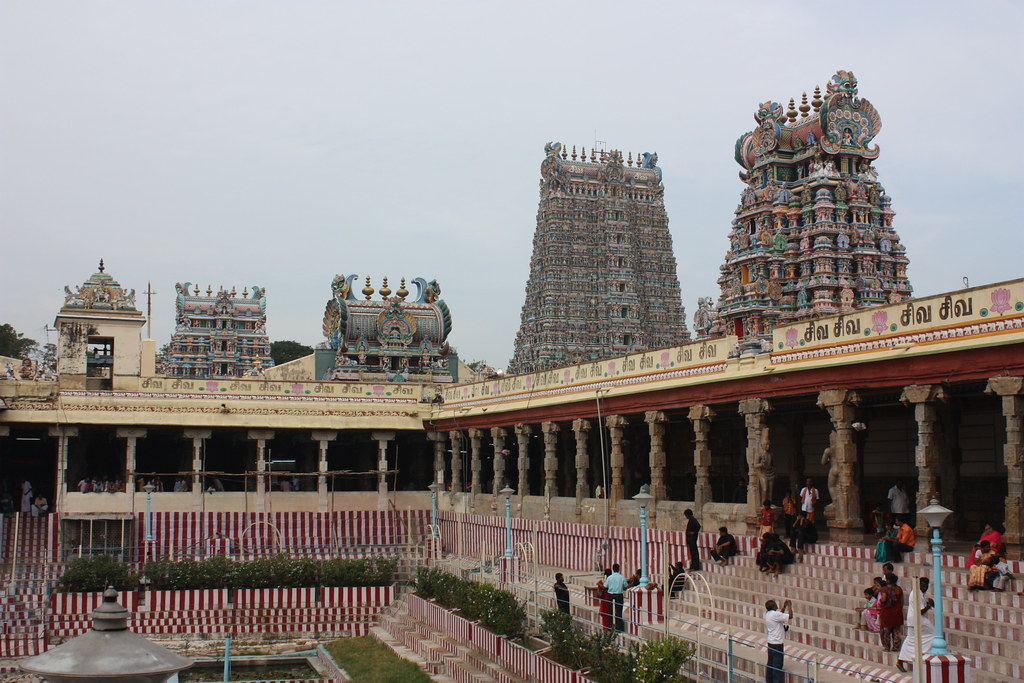
Meenakshi Temple, located in the city of Madurai in Tamil Nadu, is one of the most famous temples in India. It is known for its stunning architecture and intricate carvings. Here is all you need to know about this magnificent temple:
History and Architecture
Meenakshi Temple was built in the 17th century and is dedicated to the Hindu goddess Meenakshi, also known as Parvati. The temple has a total of 14 gopurams (towering gateways) and two main shrines, one for Meenakshi and the other for her consort, Lord Sundareshwara.
The temple’s architecture is a blend of Dravidian and Islamic styles, with intricate carvings and sculptures covering the walls and ceilings. The gopurams are adorned with colorful sculptures of deities, animals, and mythical creatures.
Famous for its Towers and Gopurams
The most striking feature of Meenakshi Temple is its towering gopurams, which are up to 170 feet tall. Each gopuram is adorned with thousands of colorful sculptures, depicting scenes from Hindu mythology.
The temple’s main gopuram, called the Rajagopuram, is one of the tallest in India and is a sight to behold. It was built in the 16th century and stands at a height of 170 feet.
Best Time to Visit
The best time to visit Meenakshi Temple is from October to March when the weather is pleasant, and the temple festivities are in full swing. The temple also hosts an annual 10-day festival called Meenakshi Tirukalyanam, which usually falls in April or May.
How to Reach
Meenakshi Temple is located in the heart of Madurai city, and you can easily reach it by bus, train, or taxi. The Madurai Junction railway station is just 2 km away from the temple, and the Madurai Airport is about 10 km away.
Entry Fee
The entry fee for Meenakshi Temple is INR 50 for Indians and INR 200 for foreign tourists. Visitors are required to remove their shoes before entering the temple, and there are facilities available for storing footwear.
Visiting Meenakshi Temple is a must-do for anyone visiting Tamil Nadu. Its stunning architecture and rich history make it a truly unique and unforgettable experience.
Golconda Fort, Hyderabad
Golconda Fort is a historic fort located in Hyderabad, Telangana, India. Here is some information about the fort:
History and Architecture
The fort was originally built in the 12th century as a mud fort by the Kakatiya dynasty. Later, it was expanded by the Qutub Shahi dynasty into a massive granite fort. The fort is known for its acoustic system, which enabled the rulers to communicate with people at the entrance from the top of the fort through a hand clap.
Famous for its Acoustics
The fort is famous for its unique acoustic system. The sound of clapping at the entrance gate can be heard clearly at the highest point of the fort, located at a distance of about one kilometer. This was used as a signaling system to warn against any potential attack.
Best Time to Visit
The best time to visit the fort is from October to March, when the weather is pleasant and the temperature is cool.
How to ReachT
he fort is located about 11 kilometers from the center of Hyderabad and is easily accessible by road. You can hire a taxi or take a bus to reach the fort.
Entry Fee
The entry fee for Indians is Rs.15, while foreigners have to pay Rs.200. There is also a light and sound show in the evening, for which separate tickets are available.
Victoria Memorial, Kolkata
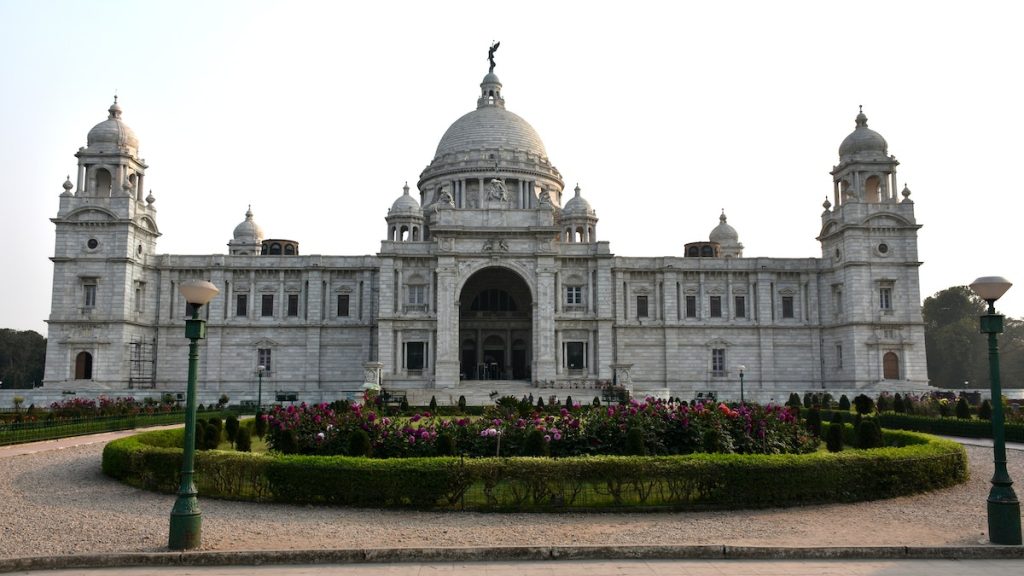
The Victoria Memorial is a large marble building located in Kolkata, West Bengal. It was built between 1906 and 1921 in memory of Queen Victoria and is now a museum and a popular tourist attraction.
History and Architecture
The memorial was designed by British architect William Emerson and was built using white Makrana marble from Rajasthan. It is a fusion of British and Mughal architecture styles, with a large dome in the center and several smaller domes and minarets around it. The building has a total area of 64 acres, and the memorial stands at the center of the garden. It houses a museum that contains a vast collection of British Raj-era memorabilia, including paintings, sculptures, and manuscripts.
Famous Landmark of Kolkata
The Victoria Memorial is one of the most famous landmarks of Kolkata and attracts a large number of tourists every year. The memorial is surrounded by lush green gardens and is a popular spot for picnics and walks.
Best Time to Visit
The best time to visit the Victoria Memorial is during the winter months from November to February when the weather is pleasant. The museum is open from 10:00 am to 5:00 pm every day except Mondays and public holidays.
How to Reach
The Victoria Memorial is located in the heart of Kolkata and is easily accessible by public transport. It is a 10-minute walk from the Maidan metro station and a 20-minute drive from Howrah and Sealdah railway stations.
Entry Fee
The entry fee for the Victoria Memorial Museum is INR 30 for Indian citizens and INR 500 for foreign nationals. The garden is open to the public free of charge.
Mahabodhi Temple, Bihar
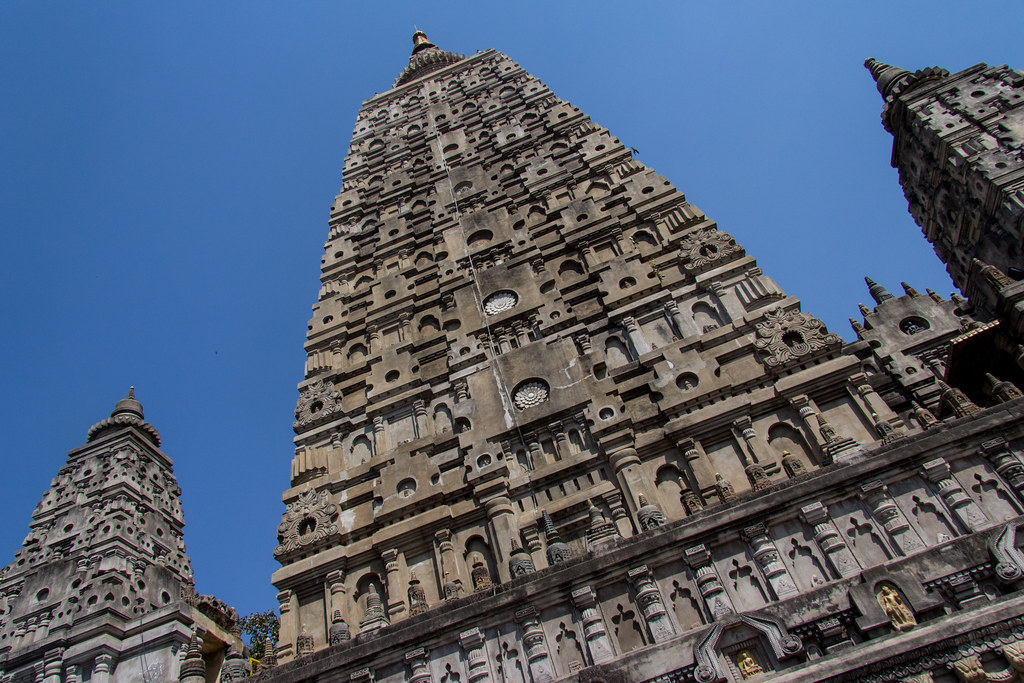
Mahabodhi Temple in Bihar is one of the most important and revered Buddhist pilgrimage sites in the world. Here are some details about the temple:
History and Architecture
The Mahabodhi Temple is located in Bodh Gaya, Bihar and is believed to have been built by the Mauryan emperor Ashoka in the 3rd century BCE. The temple complex includes a 50-meter-tall tower, a main temple, and several smaller temples and shrines. The temple is built in the traditional Indian style of architecture, with intricate carvings and sculptures.
UNESCO World Heritage Site
The Mahabodhi Temple was designated as a UNESCO World Heritage Site in 2002. It is considered to be one of the most important Buddhist pilgrimage sites in the world, as it is believed to be the location where the Buddha attained enlightenment.
Best Time to Visit
The best time to visit the Mahabodhi Temple is from October to March, as the weather is pleasant during this time. The temple can be crowded during peak pilgrimage seasons, so visitors may want to plan accordingly.
How to Reach
Bodh Gaya is well-connected by air, rail, and road. The nearest airport is the Gaya Airport, which is around 17 kilometers away from the temple. The Gaya Junction railway station is also located nearby. Buses and taxis are also available to reach the temple.
Entry Fee
There is no entry fee to enter the Mahabodhi Temple. However, visitors can make a donation to support the upkeep and maintenance of the temple complex.
Jama Masjid, Delhi
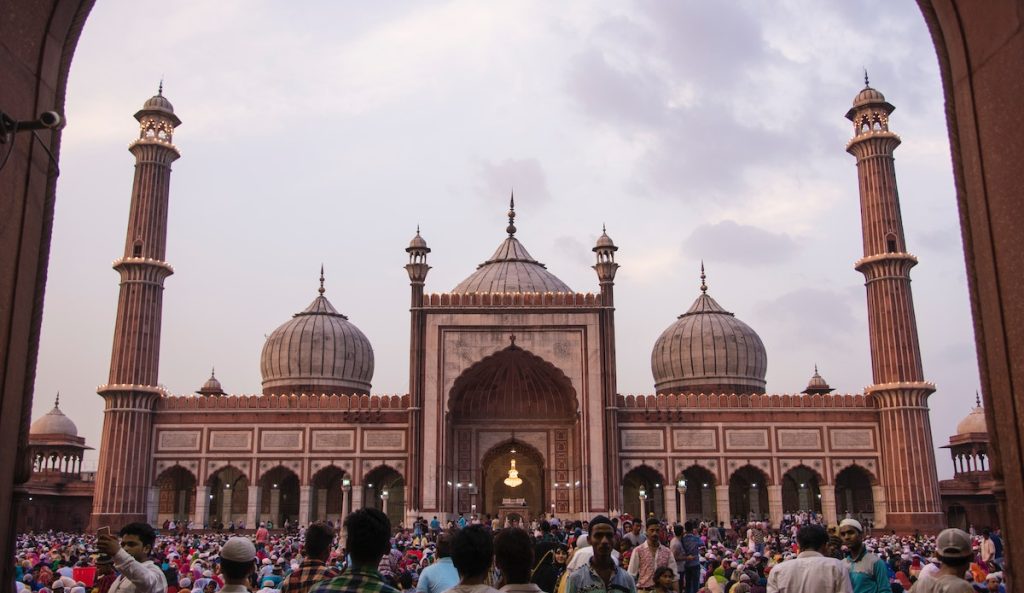
Jama Masjid is a historic mosque located in Old Delhi, India.
History and Architecture
ma Masjid was built by the Mughal Emperor Shah Jahan in the mid-17th century. It is one of the largest mosques in India and can accommodate up to 25,000 worshippers at a time. The mosque is made of red sandstone and marble and features three large domes and two towering minarets.
Famous Mosque of Delhi
Jama Masjid is one of the most famous landmarks of Delhi and is considered to be one of the greatest examples of Mughal architecture in India. It is a popular tourist attraction and a must-visit place for anyone visiting Delhi.
Best Time to Visit
The best time to visit Jama Masjid is during the winter months from October to March when the weather is pleasant and mild. It is also recommended to visit early in the morning or late in the evening to avoid the crowds and the heat.
How to Reach
Jama Masjid is located in Old Delhi and is easily accessible by metro, bus, or taxi. The nearest metro station is Chawri Bazaar.
Entry Fee
There is no entry fee to visit Jama Masjid. However, there is a fee of INR 200 for visitors who wish to take photographs inside the mosque.
Hampi, Karnataka
ampi is an ancient city located in the state of Karnataka, India. It was once the capital of the Vijayanagara Empire and is now a UNESCO World Heritage Site. Here is some information about Hampi:
History and Architecture
Hampi is famous for its stunning architecture and monuments in India that showcase the grandeur of the Vijayanagara Empire. The city is home to numerous temples, palaces, and other structures that were built during the 14th to 16th centuries. The most famous landmarks in Hampi include the Virupaksha Temple, the Vittala Temple, the Hazara Rama Temple, and the Lotus Mahal.
Best Time to Visit
The best time to visit Hampi is during the winter months, between October to February. The weather is pleasant during this time, making it easier to explore the city’s many monuments and structures.
How to Reach
The nearest airport to Hampi is in Bellary, which is around 60 km away. The nearest railway station is in Hospet, which is around 13 km away. Hampi is also well-connected by road, and buses are available from major cities like Bangalore, Hyderabad, and Goa.
Entry Fee
There is no entry fee to explore the ruins of Hampi, but there may be separate entry fees for specific monuments in India and temples.
Chhatrapati Shivaji Terminus, Mumbai
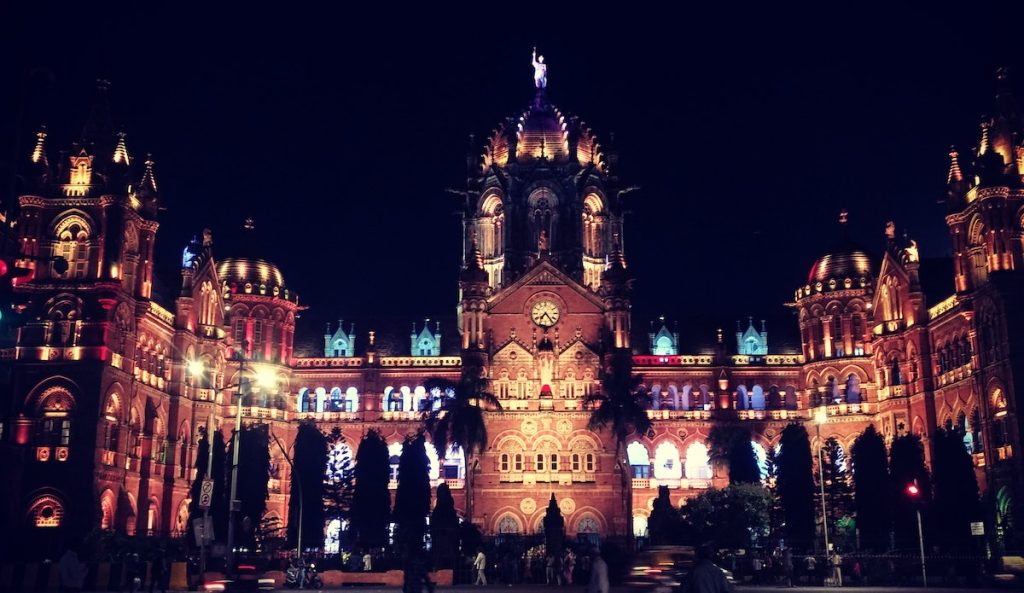
Chhatrapati Shivaji Terminus, also known as Victoria Terminus, is a historic railway station located in Mumbai, India. Here is some information you requested:
History and Architecture
Chhatrapati Shivaji Terminus was built in 1887 to commemorate the Golden Jubilee of Queen Victoria. The station was designed by Frederick William Stevens in Victorian Gothic style, blending elements of traditional Indian architecture. The station’s prominent features include its high central dome, pointed arches, and turrets. It has been recognized as a UNESCO World Heritage Site since 2004.
Best Time to Visit
The best time to visit Chhatrapati Shivaji Terminus is during the early morning hours or late evening hours when the crowd is less and the station is more peaceful.
How to Reach
Chhatrapati Shivaji Terminus is well-connected to all parts of Mumbai through local trains and buses. It is located in the heart of the city and can be easily reached by taxi or auto-rickshaw.
Entry Fee
There is no entry fee to visit Chhatrapati Shivaji Terminus, but if you want to take a tour of the building, there is a nominal fee.
Jantar Mantar, Jaipur
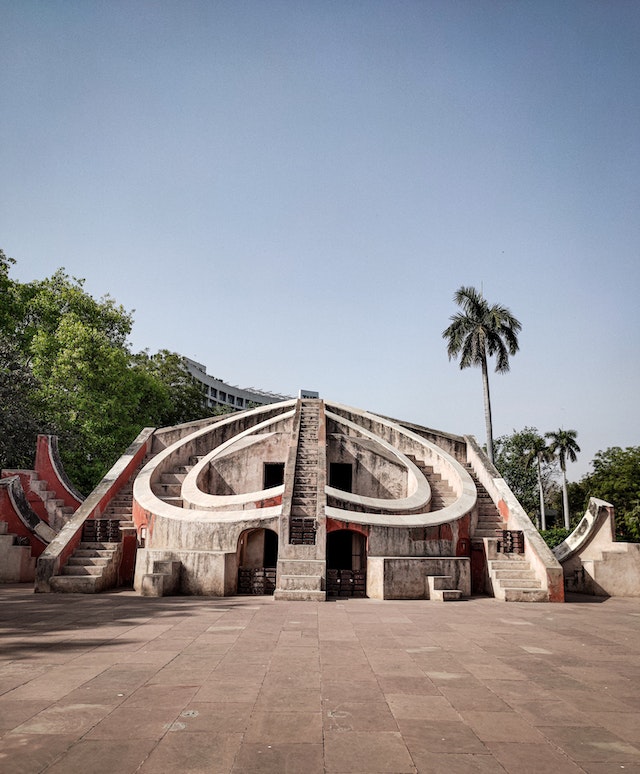
Jantar Mantar is an astronomical observatory located in Jaipur, Rajasthan. It was built by Maharaja Jai Singh II in the early 18th century and is known for its architectural and astronomical significance.
History and Architecture
Jantar Mantar is an astronomical observatory built by Maharaja Jai Singh II of Jaipur in the early 18th century. It consists of a collection of architectural astronomical instruments, including the world’s largest sundial, that were used to measure time, predict eclipses, and track stars. The observatory is a testament to the scientific and technological advancements made in India during the medieval period.
Famous for its Astronomical Instruments
Jantar Mantar is famous for its unique astronomical instruments, which are made of stone and brass. The most impressive of these is the Samrat Yantra, which is the world’s largest sundial. The observatory also has instruments that can measure the altitude and azimuth of celestial bodies, and predict eclipses with great accuracy.
Best Time to Visit
The best time to visit Jantar Mantar is from October to March when the weather is pleasant and cool. The observatory is open from 9:00 am to 4:30 pm every day, and it is best to visit in the morning or late afternoon when the sun is not too strong.
How to Reach
Jantar Mantar is located in the heart of Jaipur, near the City Palace and Hawa Mahal. It is easily accessible by taxi, auto-rickshaw, or local bus. The nearest railway station is Jaipur Junction, which is about 3 km away, and the nearest airport is Jaipur International Airport, which is about 12 km away.
Entry Fee
The entry fee for Jantar Mantar is INR 50 for Indian citizens and INR 200 for foreign nationals. There is also an additional fee for using a camera or video camera inside the observatory.
Mysore Palace, Karnataka
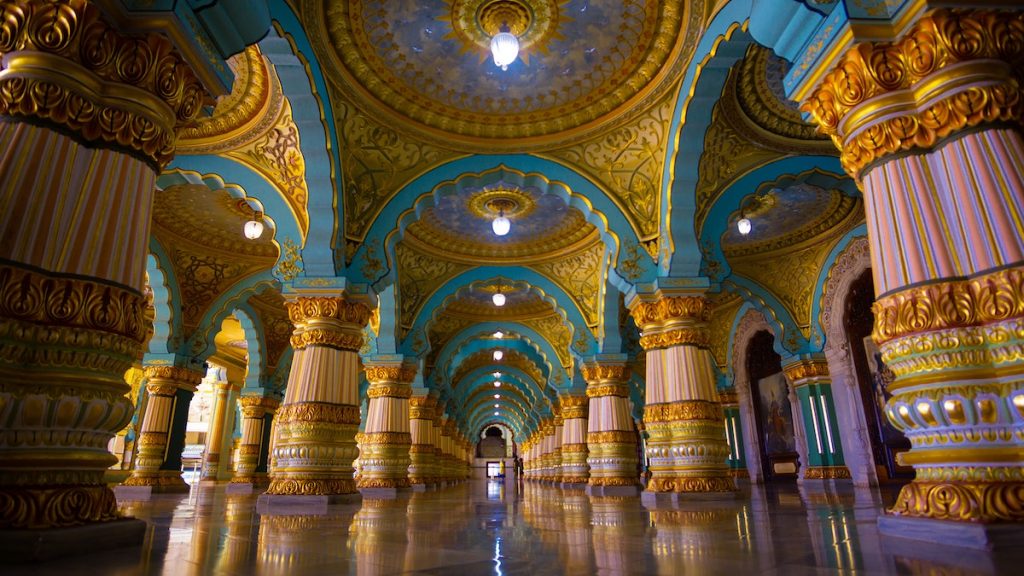
History and Architecture
Mysore Palace, also known as the Amba Vilas Palace, is a historical palace located in Mysore, Karnataka. It was originally built in the 14th century and has undergone several renovations and expansions since then. The current palace structure was completed in 1912 under the supervision of British architect Henry Irwin. The palace is a blend of different architectural styles, including Indo-Saracenic, Rajput, and Gothic.
Famous for its Royal Heritage
Mysore Palace is famous for its grandeur and rich history. It served as the residence of the royal family of Mysore and is now a popular tourist attraction. The palace has beautiful interiors adorned with intricate carvings, paintings, and artifacts. The Durbar Hall is one of the main attractions of the palace, with its ornate ceilings, chandeliers, and golden throne.
Best Time to Visit
The best time to visit Mysore Palace is from October to February when the weather is pleasant and there are several cultural festivals in Mysore.
How to Reach
Mysore Palace is located in the heart of Mysore city and can be easily reached by bus, train, or private car.
Entry Fee
The entry fee for Mysore Palace varies for Indian and foreign visitors. Currently, the fee for Indian visitors is Rs. 50 per person, and for foreign visitors, it is Rs. 200 per person. Children under the age of 10 can enter for free.
FAQs
What are some famous monuments in India?
A. India is home to many famous monuments, such as the Taj Mahal, Red Fort, Qutub Minar, Gateway of India, and many more.
Which is the most famous monument in India?
A. The Taj Mahal, located in Agra, is arguably the most famous monument in India and one of the Seven Wonders of the World.
Which is the oldest monument in India?
A. The oldest monument in India is the Great Stupa at Sanchi, which was built in the 3rd century BCE.
How many UNESCO World Heritage Sites are there in India?
A. There are currently 38 UNESCO World Heritage Sites in India, ranging from natural sites to cultural and historic landmarks.
Conclusion
India is a country with a rich history and culture, and its monuments are a testament to its fascinating past. From ancient temples and forts to modern architectural wonders, India has a diverse range of stunning monuments in India that attract tourists from all over the world. Whether you’re interested in history, or architecture, or simply want to marvel at the beauty of these structures, there is something for everyone. Visiting these monuments in India can also be a great way to learn about India’s culture and heritage. So, make sure to add these 25 stunning monuments in India to your travel bucket list and experience the magic of India firsthand.














